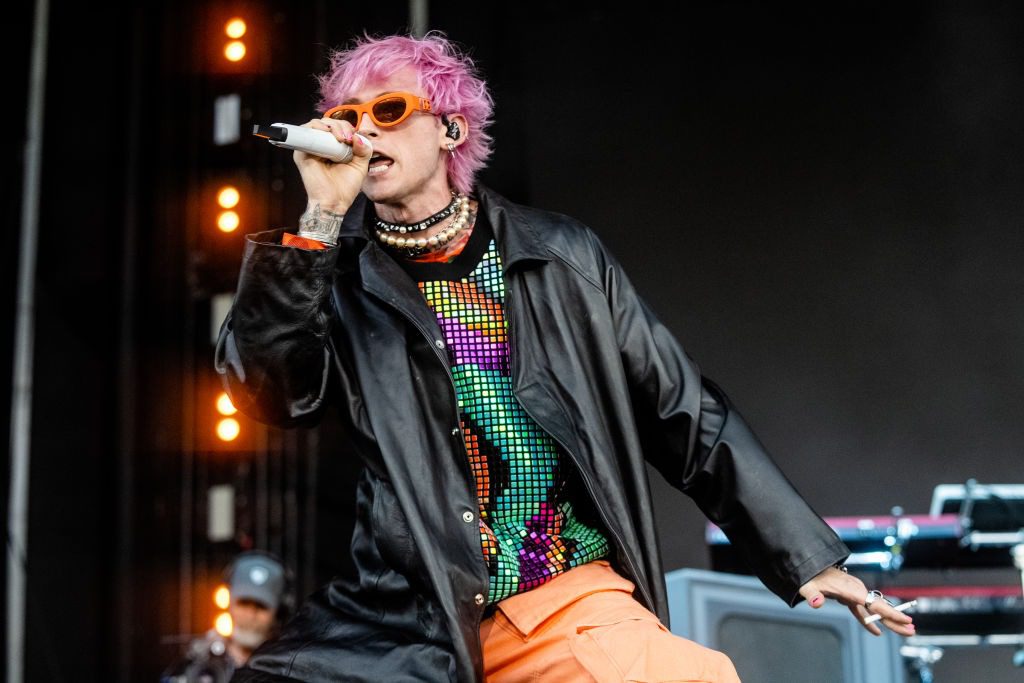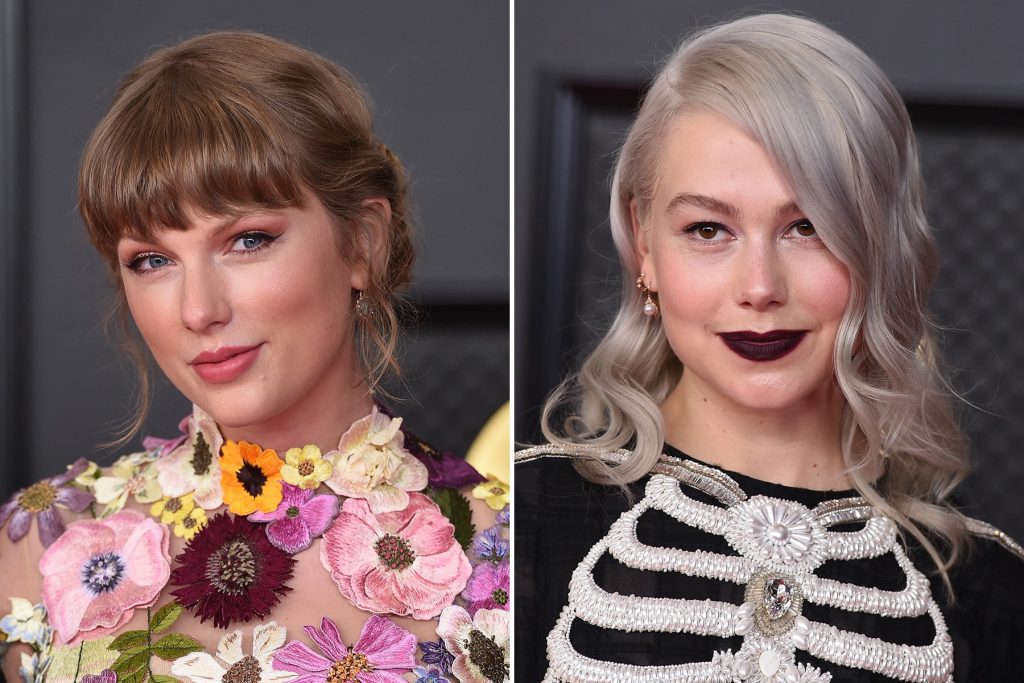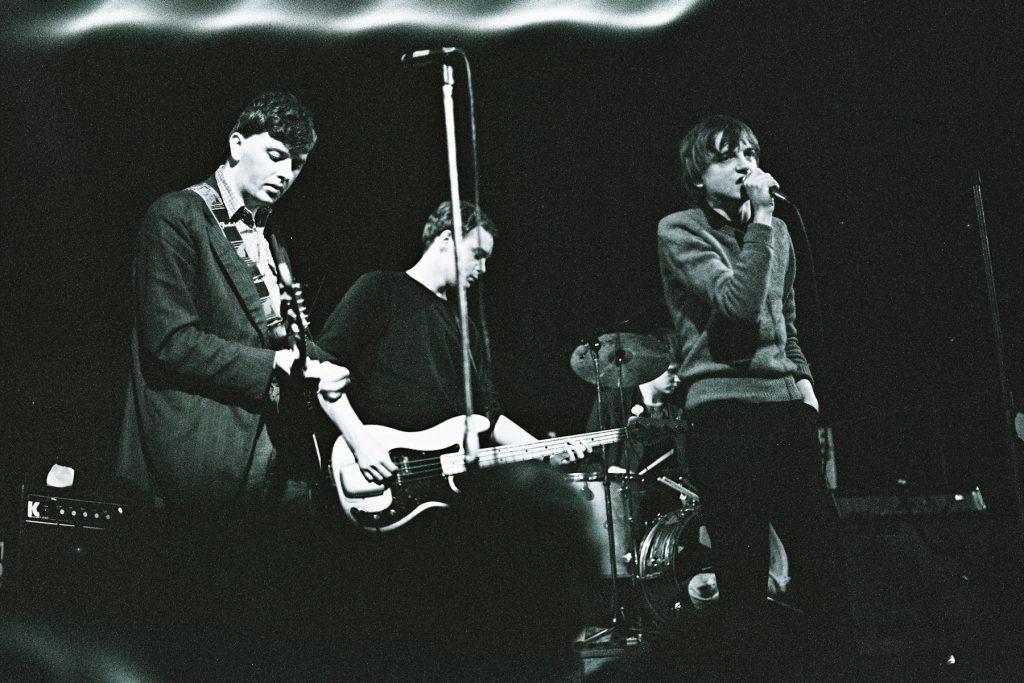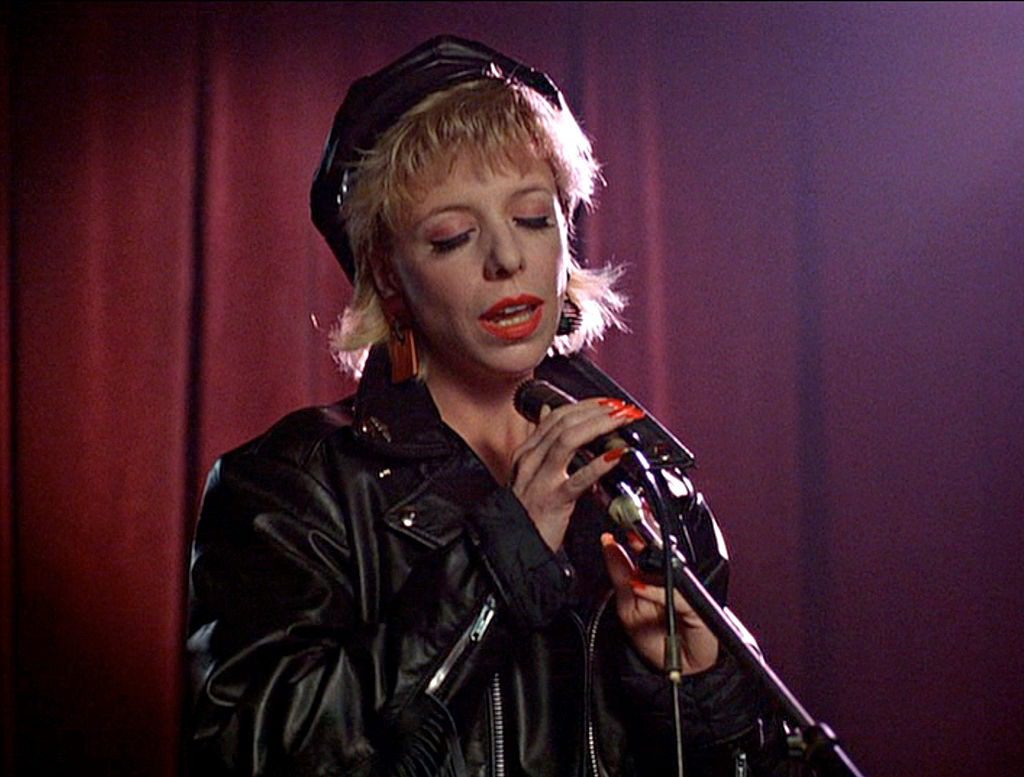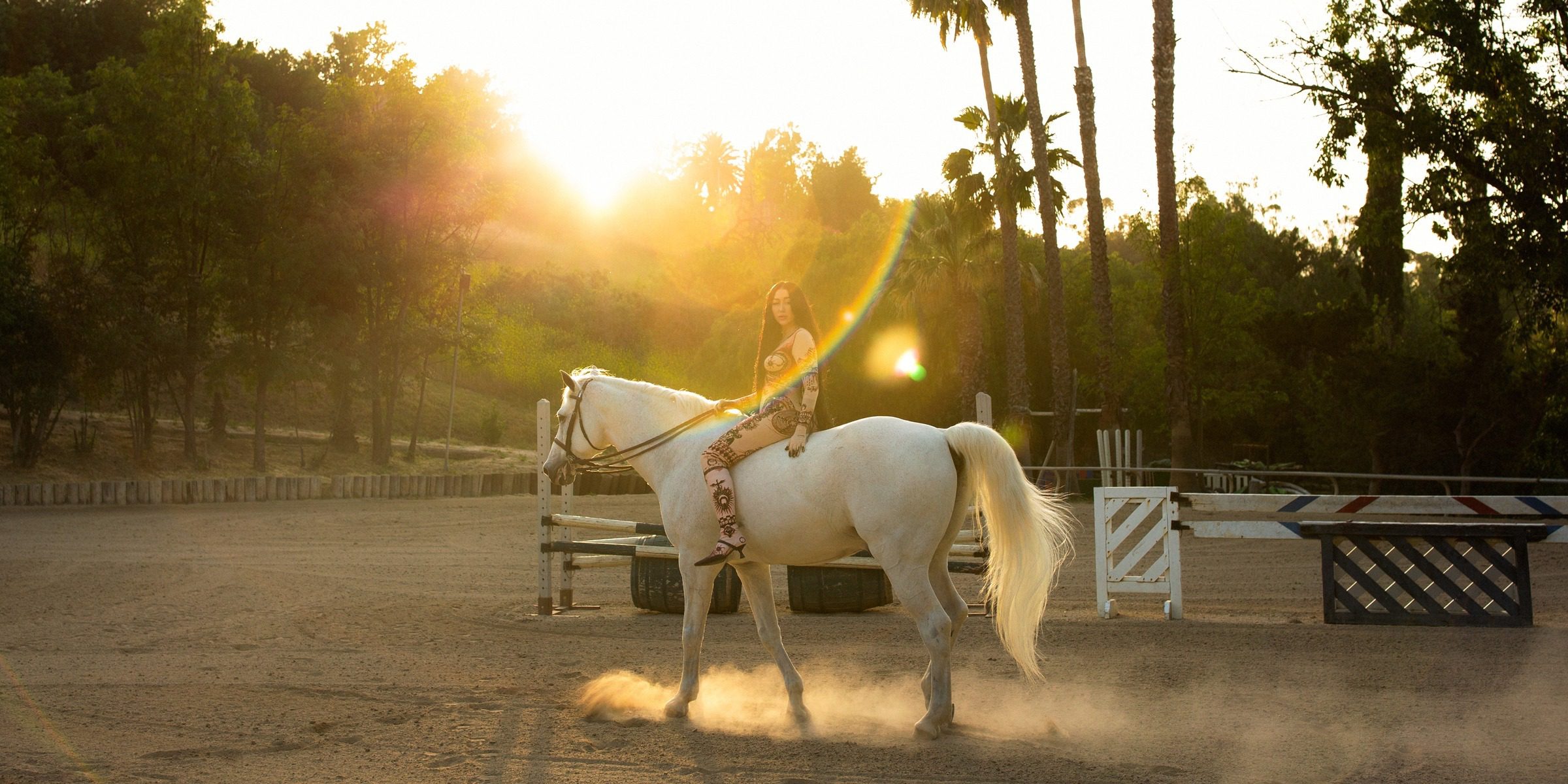
How Noah Cyrus Saved Herself
How Noah Cyrus Saved Herself
She's battled addiction, anxiety and depression and faced painful losses. Then she poured all of it into 'The Hardest Part,' a stunning debut album that helped her heal
Far West Farms, bucolic, family-run riding center perched off a chalky street in Calabasas, California, takes some effort to find. If you’re in a car, you wind your way down Ventura Boulevard and around anonymous office buildings, past the flower-strewn pet cemetery where Humphrey Bogart buried his cocker spaniel Droopy, through groves of bursting palms and spiky hedge plants. The reward, once you’ve made it, is a rush of silence. From the entrance of the farm, the perpetual roar of the 101 and the anxiety of Los Angeles fade away, replaced with rustling trees and the occasional bray of a horse.
This has been Noah Cyrus’ sanctuary since she was about 10 years old. She’s been riding her entire life; one of her earliest baby photos shows her wearing a tiny red cowboy hat atop Roman, a towering, blue-eyed Appaloosa that her father, Billy Ray Cyrus, broke himself on his farm in Nashville — though not before Roman fractured one of the most famous noses in country music. “He bucked, drug my dad through the mud,” Noah says. “That was the love of my dad’s life.”
When the Cyrus family moved to Los Angeles in the mid-2000s, Far West Farms owner Nick Karazissis — an amiable, award-winning rider now in his seventies — took Noah under his wing. “Tuesday through Sunday, every morning, I was here riding with him for about four hours a day, five hours a day. In the summer, it would be all day, every day,” she says. Karazissis was calm and reassuring, a welcome force for the youngest kid in a sprawling showbiz family. “Obviously, I had a family that was split up a lot,” she says. “Here I had something so permanent. … They would always make sure that when I came here I was Noah. I wasn’t a Cyrus, I was just Noah.”
More than a decade later, she still finds refuge here — and after a fraught couple of years, filled with aching losses and a substance-abuse problem she’s only now opening up about, she’s chosen to come here one Thursday afternoon in April to meet me. I hear her before I see her: A black SUV pulls up behind me, and I can only make out wisps of guitars trickling out of the sound system, mixing in with the clomp of horseshoes from the barn. Later, I find out she was blasting a cover of “Sloop John B” that her dad recorded for his 2001 television series, Doc. Noah, who appeared on the show a few times as a cherubic toddler, has always loved the cover; she actually thought it was her dad’s song for a while. Billy Ray recently sent her a new version he’d been fiddling around with at home. “He gets bored, so he threw on his own drums a few weeks ago,” she tells me.
Noah arrives alone, dressed in a black hoodie and black sweatpants, her jet-black hair cascading past her waist. The curves of her face are instantly familiar; you can find traces of her parents or any one of her siblings in them if you look long enough. When she’s excited, her Tennessean drawl tends to get stronger, and it warms up her voice as she takes me around the stables. She’s carrying an apple in each hand for Fluffy, a Dutch warmblood belonging to Karazissis. She formed a special bond with Fluffy after Constantine, her longtime horse, whose name she has tattooed on her wrist, developed a baseball-size tumor in his stomach and had to be put down. Fluffy recognizes Noah instantly as she walks into his stall and strokes his muzzle.

Fashion Direction by Alex Badia. Produced by Brittany Brooks. Styling by Brett Nelson for The Only Agency. Market Editor: Emily Mercer. Hair by Laura Rugetti for The Only Agency. Makeup by David Velasquez for Rare Creatives. Location Far West Farms, Calabasas, California. Main image: Jumpsuit: Marine Serre; Earrings: Loree Rodkin. This image: Dress: Iris Van Herpen; Earrings: Stefere.
Jessica Lehrman for IndieLand
“I always say feeling something in the palm of your hands is the closest you can really be to something,” she says, her hand moving down his neck. “It’s just feeling the way they’re breathing and the heartbeat and how you can connect to each other.” She shares an old saying that her late grandfather Ron Cyrus, who served in Kentucky’s House of Representatives for 11 consecutive terms, was fond of: “The outside of a horse is good for the inside of a man.”
Lately, Noah has been focusing on what’s good for her, taking each day slowly. Since late 2020, she’s been in recovery from an addiction to Xanax, the benzodiazepine medication often prescribed for anxiety or panic attacks. After spiraling into a pitless pattern of drug abuse, she got help — six months before she started pouring everything into her debut LP, The Hardest Part. Though the music was soldered in pain, what stands out is Cyrus’ sense of grace and composure as she blends polished country pop and folk sounds, as woodsy and pristine as the inside of a walnut. The album is understated, even when it’s capturing the darkness that almost shattered her.
Three months into recovery, Cyrus met Mookie Singerman, a musician turned manager who used to front the Poughkeepsie, New York, metal band Genghis Tron, and who also manages indie wonder girl Caroline Polachek. After becoming Cyrus’ manager, he put her in a room with Mike Crossey, the Northern Irish producer with a credit list that includes the Arctic Monkeys, the 1975, and one of Cyrus’ favorite artists, Ben Howard. She and Crossey would wake up early in the morning and cross off tasks on a whiteboard — vocal takes, percussion arrangements, guitar additions — to build every song. Each day was a step closer to finishing the album, another day Cyrus stayed focused, grounded, and healthy.
“It gave me so much structure in the time that I really needed structure, because I didn’t want to just be sitting around and stirring in my brain,” she says. “It gave me hope.”
“When I turned 20, I was overcome with the thought that I might not turn 21. Death upon my doorstep, if I took just one more step, there’d be nothing left of me except these songs …”
Those lines can knock a person sideways, and they’re how Cyrus chose to open her album. They come from “Noah (Stand Still),” a ballad that laces together gentle fingerpicking and Cyrus’ piano melodies, before building into an emotional crescendo. She’d shared an early demo with Crossey when she first met him in his Culver City studio. “I was blown away right out the gate with the songwriting,” he says. Her lyrics were intimate and fearless. “That was what struck me right away — the vulnerability and the honesty. She’s talking about very personal things in her life, and she’s done it in a way where they’re beautiful songs.”
Cyrus has tracked her battles with anxiety and depression in her music before. Her first EP, Good Cry, from 2018, was a mix of moody, minimal alt-R&B that was honest about the loneliness and heartbreak she was feeling at the time. She followed that up in 2020 with The End of Everything, an EP that was more experimental but just as searing, with songs such as “Lonely” and “July” touching on mental health and toxic relationships. The project got attention — an updated version of “July” with Leon Bridges cracked the Hot 100 — and later that year, she received a Grammy nomination for Best New Artist. Following the nomination, Cyrus teamed up with the Australian singer-songwriter PJ Harding for People Don’t Change, a set of six songs that deepened her catalog with themes of loss and spirituality.
Though Cyrus was always interested in music, she says what she wanted growing up was to “be a normal kid”: “I had a really hard time being a part of a public family, and I struggled a bit with that, because it wasn’t exactly my first choice.” Her high-profile family attracted even more fame when her older sister Miley Cyrus became one of Disney’s biggest stars on the show Hannah Montana, which ran for much of Noah’s childhood, from about age six to 11. “I had a hard time with people coming up to me and saying, ‘Are you Miley Cyrus’ little sister?’ or ‘Are you Hannah Montana’s little sister?’ I did not like that, and it stripped me of my own identity for a long time.” Sometimes, she says, if people asked, she’d just answer no. As she started going through puberty, she developed body dysmorphia, something that was only exacerbated by the pressures of public life. She battled depression, and a light she felt she carried as a kid got pushed down, deeper and deeper.
When she was 18, she tried downers for the first time. “My boyfriend at the time, when I was 18, was the first person that gave me a Xanax, and it became a way for us to bond,” she says. “I think I wanted to fit in with him. I wanted to be what he wanted and what he thought was cool and what I thought everybody was doing.” Party drugs like Molly had never been her thing. This was different. “Once I felt that it was possible to silence things out for a second and numb your pain, it was over,” she says.
Cyrus’ struggle with Xanax coincided with just how ubiquitous benzos and other prescription drugs have become in pop culture over the past several years, especially in music. Songs that list out contents of entire medicine cabinets have spiraled off into mini genres of smooth Xan-rap and lethargic pill-pop, striking a chord with a younger generation.
But the rise of benzos has also had deleterious effects in a country that is still in the grips of a deadly opioid epidemic. In 2020, 16 percent of overdose deaths involving opioids also involved benzodiazepines. While a Xanax prescription can be safely used to treat anxiety and panic attacks, some artists have been open about their experiences misusing the drug: Chance the Rapper, Justin Bieber, and Lil Xan — someone Cyrus dated at one point, and whose entire artistic moniker is a reference to Xanax — are among those who have talked about recovering from abusing the sedative. Other tragedies have underscored the dangers of benzos: In 2017, the emo-rap heartthrob Lil Peep nodded off after taking a lethal combination of fentanyl and Xanax, and died at age 21.

Look: Elena Velez; Shoes: Pleaser; Earrings: Loree Rodkin
Jessica Lehrman for IndieLand
To Cyrus, a big part of the problem was how accessible the drug was. “I was surrounded by people who were easily able to get it by buying it from people,” she says. A few of her friends at the time bit back comments about her drug abuse and “kind of cosigned it,” she says. What started recreationally morphed into a bleaker habit. “It just kind of becomes this dark pit, bottomless pit,” she says. She’d sleep all day and wake up at 8 p.m. She didn’t know which day was which, and her memory was slippery and unreliable. By the time the pandemic hit in 2020, her substance-abuse problem was at its worst.
That entire year was chaotic. The lowest and most alarming moment came during an international television interview: Cyrus was doing press after releasing The End of Everything in May, and she started to pass out mid-conversation. “I was completely nodding off and falling asleep, and unable to keep my head up or keep my eyes open, because I was so far gone,” she says. (The interview never aired.) The loss of her grandmother Loretta, in August of that same year, was a bitter wake-up call. Cyrus didn’t really get a chance to say goodbye, and she wonders if she would have picked up the phone more often had she been more present. “I felt so guilty for not being there when my grandma died. I was there physically, but emotionally, I was not there. I couldn’t be,” she says. It also weighed on her that she’d shut herself off from her mother, Tish Cyrus, who was grieving. “That was my big eye-opener: I was sitting alone, and I was scared, and I realized that all the people that I love and all the people that I need, I was the one pushing them away,” Noah says. More turmoil came that December, when she ignited a social media firestorm after she used the racially insensitive word “nappy” to describe the conservative pundit Candace Owens on Instagram. (She’s deeply apologetic: “It’s something that I’m just sorry for, that I could have possibly hurt people that I respect and a community that I respect and I love.”)
Cyrus won’t go into detail about the first few months of her recovery process; she only says that it was a delicate time. “I was being helped by everybody that I needed help from, and it took some time to get on my own two feet,” she says. A game changer, she feels, was meeting Singerman and slowly wading into the creative process: “Mookie brought so much hope into my world, and so much care and compassion for me and my situation.” Music became the best kind of catharsis for her, and while she had some trepidation about sharing what she was going through, she almost couldn’t avoid it. “It was coming out in my lyrics,” she says. “So, it’s like, ‘I’m not going to hide my truth.’ I think it was evident that I was going through something the past couple years — I think my fans saw it. I think the public could see it.” She wanted to take the reins and tell the story herself.
“Noah had a really strong sense of what she wanted,” Crossey says. Her writing is rooted in the classic country and folk artists she loves, like Kris Kristofferson and Terry Jacks, and she guided the arrangements to sound timeless and minimal, yet unexpected. On the title song, “The Hardest Part,” it was her idea to keep the percussion rhythm stripped back; on “I Burned LA Down,” she wanted the drums just a little offbeat and out of the pocket.
Her friend PJ Harding has told her that he hears a lot of her in the music. “I think he means, ‘Everywhere, there’s pieces of you,’” she says. That intimacy comes through especially on “Loretta’s Song.” She wrote that one as a tribute to her grandmother, but also as a gift to her mother — a eulogy and gentle consolation that’s helped her make amends with some of the losses in her life the past few years.
There’s a memory from 2019 that appears twice on the album, on “Noah (Stand Still)” and “The Hardest Part.” It was around Christmastime, and Cyrus went to visit her dad in Nashville. Her struggle with substance abuse had intensified, but she says most people still hadn’t realized how bad things had become. That day with her dad, though, was haloed in joy. They spent the day riding four-wheelers and walking around the farm together. He pushed her on an old rope swing she used to play on as a kid, and they talked about different things — her childhood, her grandfather. But a sadness clung in the air. “Obviously, it was made public knowledge that my parents had been through some rough patches,” she says. (Billy Ray and Tish filed for divorce in April this year — not for the first time.) “It felt like there were words that we both had to say but just couldn’t say it.”
The Hardest Part isn’t just Cyrus processing her journey with addiction. It’s also reconciling many of the relationships around her. One of the most pulverizing moments on the album is “Every Beginning Ends,” with Ben Gibbard from Death Cab for Cutie, a band Cyrus fell in love with because of her older sister Brandi. She and Gibbard had been talking about the dissolution of past relationships — when one person stops putting the effort in, when the laughter fades. “I relate to that in many ways, not only with me, but also just with my parents’ relationship,” Cyrus says. “Writing about that gave me more understanding.”
Gibbard says he didn’t know what to expect from Cyrus, but he was floored once they met in Seattle and began putting the song together, line by line. “I kept coming back to it and just basking in her brilliance,” Gibbard says, comparing her writing style to his friend Jenny Lewis’. “It’s easy to be mysterious. It’s easy to be aloof. It’s easy to be cool. It’s so much harder to be earnest, and it’s so much harder because she’s really opening herself up with a lot of these songs.”
Celebrities who open up about addiction are often expected to become role models or figures of empowerment. Cyrus knows she doesn’t have all the answers, and says that she just wanted to share her experience with her fans, in case it helps them get through their own hardships. “I’m not trying to be, like, any spokesperson for recovery or anything like that,” she says. “I, myself, am just going through it and figuring it out.”

Look: Elena Velez
Jessica Lehrman for IndieLand
These days, Cyrus’ world is a little quieter, with hours dedicated to therapy and psychiatry and a lot of time at home with her dogs, Mellow and Marshall. “I wake up in the mornings, and I’m able to look in a mirror and go on about my day without hating myself,” she says. “I’m able to comfort myself and nurture myself.”
A text thread called Hotline Siblings helps her check in regularly with her brothers and sisters, and she goes to Nashville often to see her baby nephew, Bear. She’s close to her mother, and her dad calls her constantly, blasting her album through his speakers and playing along on guitar.
Cyrus still has complicated feelings about her fame: “I don’t look at it as, ‘In 10 years, I have to be the world’s biggest superstar.’”
Right now, she is feeling unbound. She has thought about doing a deluxe release of The Hardest Part, maybe with an a cappella version of “I Burned LA Down,” or shaving down the pop-oriented ballad “Unfinished” to just an acoustic guitar.
She’s even sent a few music videos in which she’s riding horses to Karazissis at Far West Farms. “He’s always commenting how proud he is of himself for teaching me such beautiful equitation,” she says, laughing. Just like that ranch, her music has become one more place where she’s found peace.
